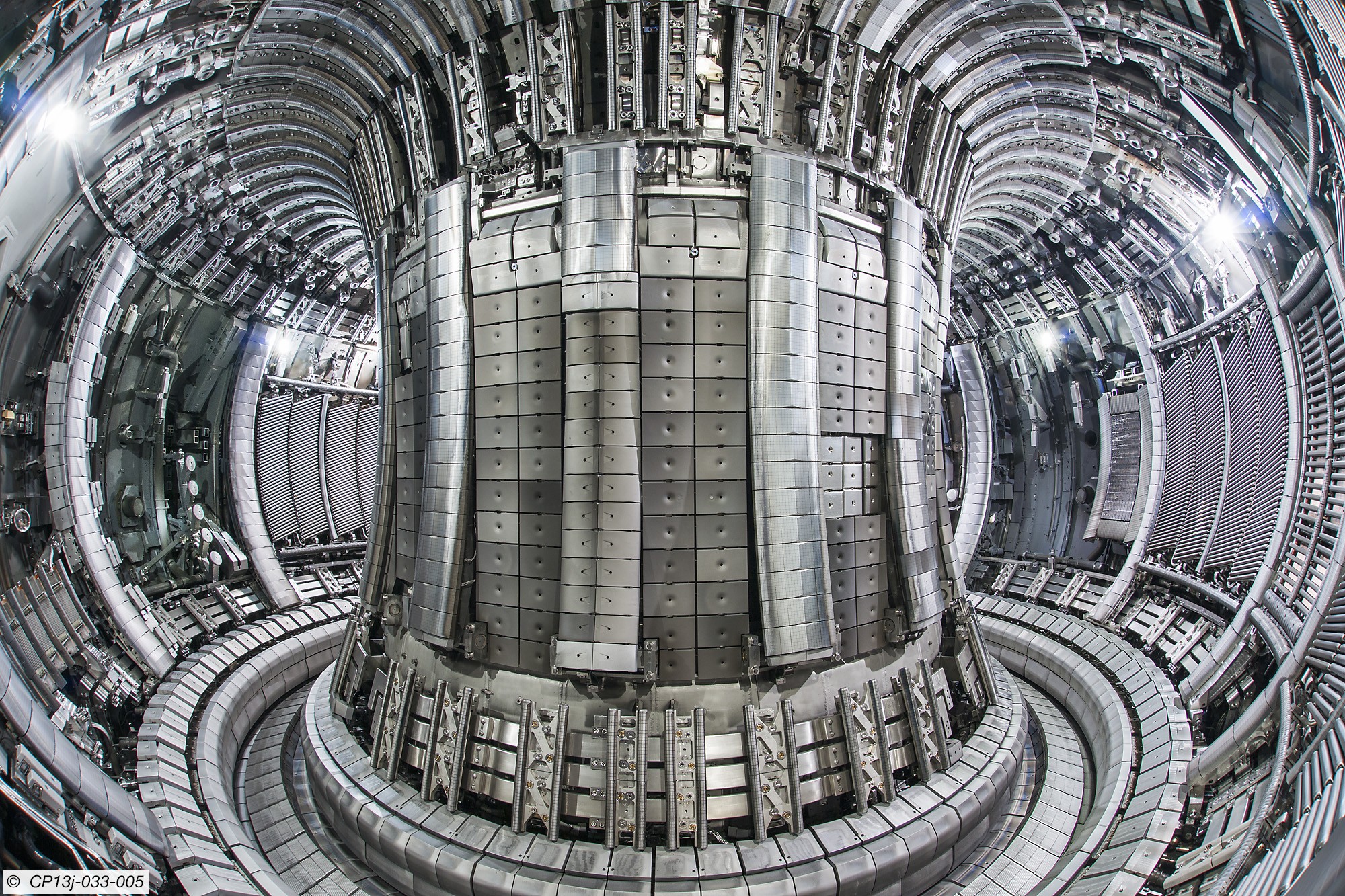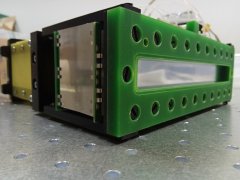The Laboratory conducts research in an aim to analyse the experimental results on the JET tokamak (https://ccfe.ukaea.uk) and smaller devices such as ASDEX-Upgrade (Garching, Germany) (www.ipp.mpg.de), TCV (Lausanne, Switzerland) (www.epfl.ch) or MAST Upgrade (Culham, UK) (https://ccfe.ukaea.uk). All works are carried out under the EURATOM Community program and within the EUROfusion consortium (www.euro-fusion.org) whose Polish representative is the Institute of Plasma Physics and Laser Microfusion.
The main goal of the experimental campaign, the JET tokamak analysis and modelling campaign is the development of operational scenarios for the deuterium-tritium campaign as well as for the next-generation ITER tokamak (www.iter.org) currently being constructed in the south of France, in Cadarache. In works dealing with fusion power, for many years a huge challenge has been the selection of appropriate construction materials that, in contact with plasma, will not lead to its cooling. JET is currently equipped with a beryllium wall and a tungsten divider (a structural element for the removal of 'helium ash') which is exactly the same materials that will be used in the ITER tokamak.
The employees of the Laboratory take an active part in experimental campaigns and in the analysis of data recorded on JET from various spectroscopic diagnostics in the field of EUV, VUV and VIS radiation. On this basis, the concentration of impurities of such elements as tungsten, nickel, iron, copper and molybdenum is determined, and it is possible to study the behaviour of these impurities in various experimental conditions.

Inside the JET tokamak (EUROfusion, CC BY 4.0 licence)
The research performed on the remaining tokamaks complements the research conducted on the JET device. Medium-sized tokamaks have unique experimental opportunities. In the ASDEX-Upgrade one, the first wall is made entirely of tungsten components, which makes it possible to conduct specialized studies of the plasma-wall interaction and the transport of heavy impurities in plasma. In the TCV tokamak, in turn, thanks to the possibility of shaping the plasma into various magnetic configurations, research is performed on alternative divertor concepts. On these devices, researchers from the Laboratory also analyse signals from spectroscopic diagnostics, including CXRS diagnostics (Charge Exchange Recombination Spectroscopy) which is used to determine the ionic temperature, plasma rotation speed and the average effective charge of the plasma (Zeff).
The IPPLM Laboratory of Plasma Research with Spectroscopic Methods finds in its structure also the Laboratory of Laser Plasma Spectroscopy where tests are carried out using the LIBS (Laser Induced Breakdown Spectroscopy) method to examine the composition of the sample or in the context of developing diagnostics for measuring fuel retention in a fusion reactor. In spite of the fact that the Laboratory was established at the beginning of 2020, this research has been conducted in the IPPLM for many years, first under the EFDA agreement, and now as part of the EUROfusion projects.










